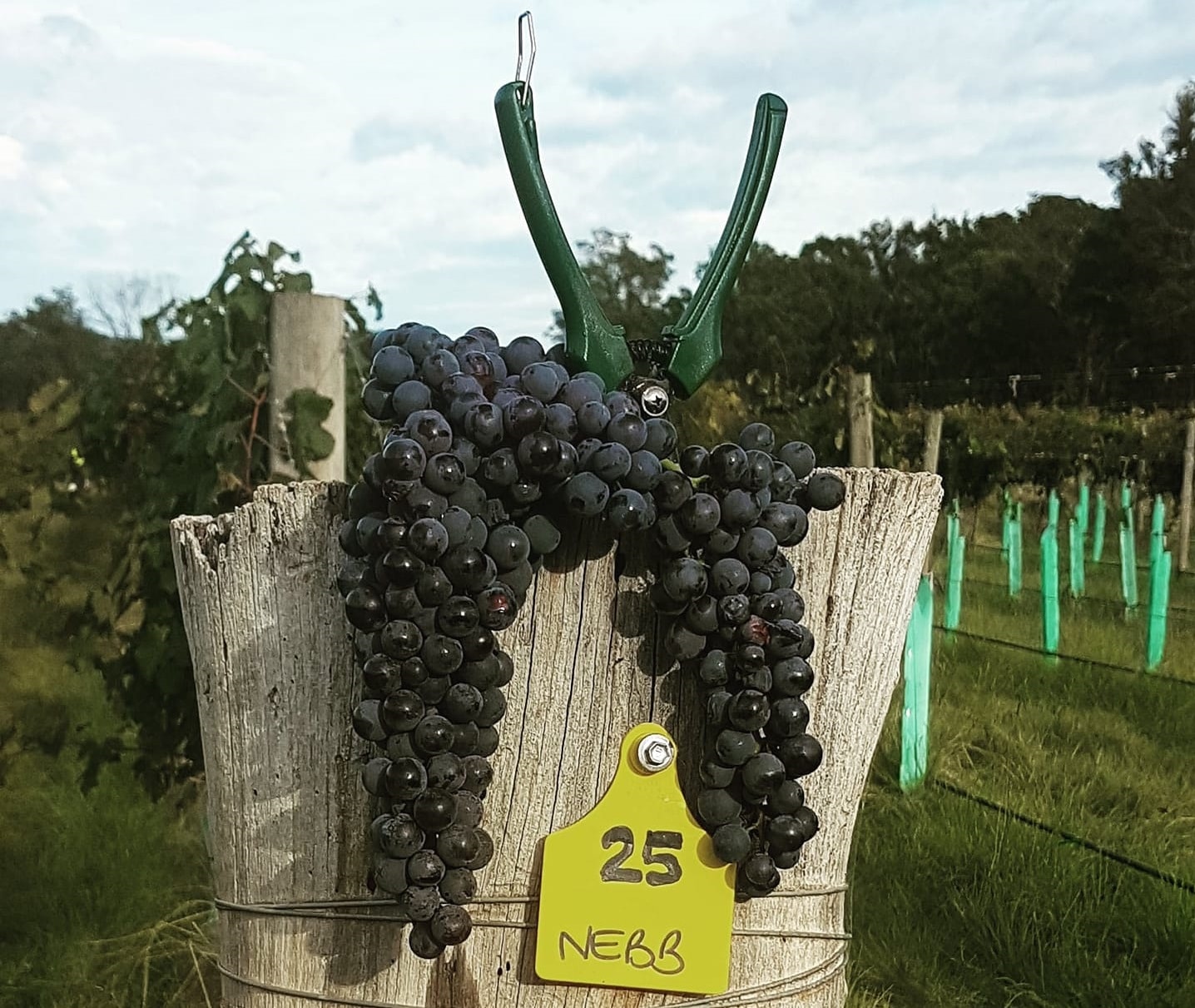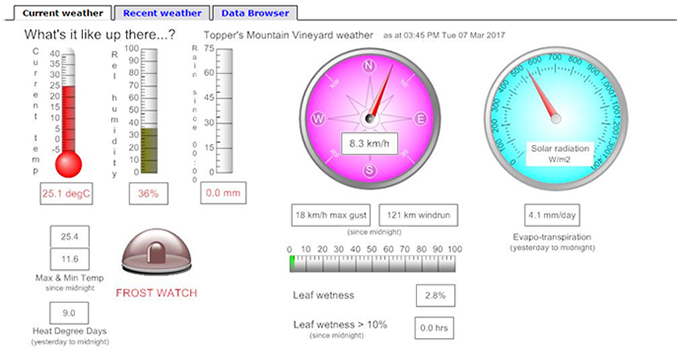Soil & Climate

…
Our vineyard is located just north of Tingha (between Armidale & Inverell) on the spine of the Great Dividing Range in northern NSW. We are on the western edge of the New England tablelands at an elevation over 900m above sea level. The vineyard is perched high above the valleys of the McIntyre and Gwydir rivers, sporting rusted ochre volcanic soil. This soil, known as Krasnozems, is very free draining, allowing the vines to develop deep root systems and survive the high annual rainfall between 700-900mm.
While Topper’s Mountain is much closer to the equator at 29.5°S than most world viticulture, its altitude keeps maximum temperatures down and bestows cool nights and a strongly continental climate. Summer temperatures vary from about 10-15°C at night to 28-33°C during the day. These cool summer maximum temperatures lend the wines an elegance and fruit definition more commonly found in vines grown over 1000km above the Equator.
At the cooler end of the scale, our winters are pretty chilly. Our 2012 vintage maxed out at only 3 days above 30°C, with no temperatures recorded above 32°C. Incredibly, these three days occurred in October and early April, not January or February!
Rare Varieties

…
The 10ha vineyard specialises in alternative varieties, with the larger blocks occupied by:
Tempranillo, Sauvignon Blanc, Nebbiolo, Gewurztraminer, Chardonnay, Tannat and Gros Manseng
The boutique blocks are planted with:
Pinot Noir, Pinotage, Viognier, Touriga Nacional, Tinto Cão, Pinot Blanc, Chenin Blanc, Verdejo
In 2002, a small plot of the vineyard (20 rows) was dedicated to trialling new varieties. Each row was planted with a different variety to experiment with the terroir and see what worked and what did not. This plot is affectionately known as Fruit Salad.
We’ve had our ups and downs, the most successful of which was Gros Manseng, a white grape grown primarily in the southwest of France. Manseng is botrytis resistant, flavour intensive grape with a piercing acidity; thriving off the warm, wet summer.
Terroir & Climate Change

…
Click HERE to see Australia´s Wine Future – A Climate Atlas
We plan to continue our experimentation with the Fruit Salad nursery. By being flexible, we can better adapt to the changing climate, some of which we have already experienced with bushfires destroying 95% of the 2019 vintage.
The logic behind the experimentation is fairly simple. We don´t believe that the ´classic´ portfolio of Chardonnay, Shiraz and Cabernet Sauvignon is sustainable for many Australian regions. We took inspiration from the Douro Valley in Portugal and grafted several rows of Touriga Nacional and Tinto Cão to blend with our Tempranillo.In order to prepare for the higher temperatures we will be facing in the future, we are focusing on varieties that have proven track records in climates warmer than Topper’s, namely Verdejo and Chenin Blanc.
In addition to focusing on varieties suitable to warmer climate, we are also focusing on varieties with high natural acids. In order to prepare for the higher temperatures we will be facing in the future, we are focusing on varieties that have proven track records in climates warmer than current Topper’s, namely Verdejo and Chenin Blanc.
We are very fortunate that water is not an issue for Topper’s as we have plenty of it underground. However, we prefer not to irrigate unless conditions are very dry at critical stages of the vintage. In this area, our focus is also on varieties that ripen later like Nebbiolo or Manseng.

